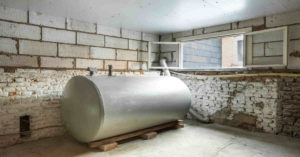
Five Facts to Know About Oil Heat
- Location, Location, Location
The U.S. Energy Information Administration estimates that 5.5 million homes in the United States utilize oil for home heating and 82% of those homes are located in the North East. In addition to being the primary region for residential oil use, commercial oil use is also highest in the North East, at about 35%. While the region does play a part in the type of heating system that a home uses, the primary source of home heating for the United States is natural gas.
- New Kid on The Block
Oil has only been in widespread use for home heating purposes since the 1920s, replacing long-standing sources such as coal and wood. Coal was used as a source of heat for funeral pyres and metal smelting as early 3,000 BC. What helped accelerate the usage of oil for home heating was the invention of the forced air furnace in 1935. Originally designed to use coal, gas and oil furnaces soon replaced them.
- Higher and Higher
Energy Star recommends replacing a furnace if it’s over 15 years old for a more efficient unit. New Energy Star units are 15% more efficient than new non-Energy Star units. Energy.gov states that a 20-year old furnace may only have an efficiency rating of 78% or less, whereas a new unit can have a 95% efficiency rating. This can save a homeowner from day one of its installation and even hundreds of dollars over its first year.
- Environmental Impact
While oil might be more expensive than natural gas, the difference in environmental impact is significant. Bioheat, which Tragar Express delivers to its customers, is a combination of standard heating oil and biodiesel and is made from renewable resources, including restaurant cooking grease. Bioheat has other environmental advantages over standard heating oil, including a lower carbon emission than natural gas, it burns cleaner and more efficiently, and is even biodegradable.
- Hot, Hot, Hot!
Oil heat produces about twice as much heat as natural gas per unit. This means that the same space will be heated in half the time and use less fuel to do so. The resulting condensation produced by an oil furnace is half as much as a gas furnace and this translates into a doubly long lifespan for an oil furnace (30 years) versus a gas furnace (12-15 years).
Quality Home Heating Oil from Tragar Express
Tragar Home Services has been providing highly-rated customer service and superior HVAC products to Long Island homeowners for over 60 years. To learn more about our heating, cooling, and plumbing services, call Tragar Home Services at (516) 221-2559. For the lowest prices on home heating oil, visit our homepage to view prices and order.


